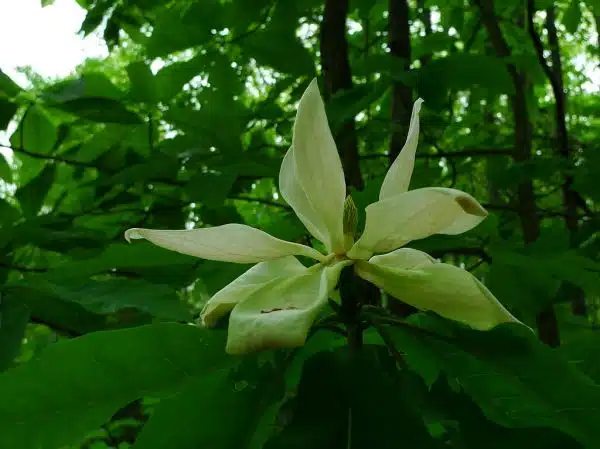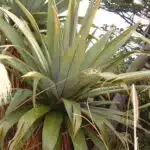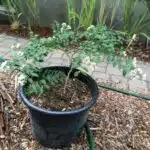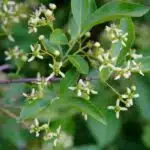Bigleaf magnolia (Magnolia macrophylla) is a stunning deciduous tree native to the southeastern United States. Known for its large, showy leaves and fragrant flowers, this tree is a popular choice among horticulturists and plant enthusiasts alike. Despite its popularity, growing and caring for bigleaf magnolia can be a challenging task, requiring careful attention to soil conditions, watering practices, and pruning techniques.
In this article, we will provide a comprehensive guide on the care and cultivation of bigleaf magnolia. We will cover everything from selecting the right location for planting to maintaining healthy growth throughout the year. Whether you are an experienced gardener or just starting out with your first bigleaf magnolia tree, our guide will provide you with all the information you need to ensure that your tree thrives in your landscape. So let’s dive in and explore the world of bigleaf magnolia together!
Understanding Bigleaf Magnolia: An Overview
The bigleaf magnolia is a stunning tree that can add beauty and elegance to any landscape. Native to the southeastern United States, this deciduous tree is known for its large leaves and fragrant flowers. Before you decide to plant a bigleaf magnolia, it’s important to understand its characteristics and habitat range.
The bigleaf magnolia can grow up to 80 feet tall and has enormous leaves that can be up to 32 inches long. The leaves are dark green on top and pale underneath, with a velvety texture. In the early summer, the tree produces large, fragrant white flowers that can be up to 12 inches in diameter. The flowers are followed by cone-shaped fruit that ripens in late summer or early fall.
In the wild, bigleaf magnolias are found in moist habitats such as bottomlands, ravines, and along streams. They prefer acidic soils and partial shade but can tolerate full sun if they have plenty of moisture. When planting a bigleaf magnolia in your landscape, it’s important to select the perfect location for your tree so that it can thrive and reach its full potential.
Selecting The Perfect Location For Your Tree
Understanding the overall characteristics of bigleaf magnolia is crucial in determining the perfect location for optimal growth. Once you have an overview of its features, it’s time to select the ideal location for your tree. Sun exposure and soil type are two critical factors that should be considered in this process.
Bigleaf magnolia thrives in partially-shaded areas, making it suitable for planting under deciduous trees or near tall evergreens. It can tolerate full sun but prefers a bit of shade during hot summer afternoons. When selecting a site, consider the amount of sunlight that area receives throughout the day and year.
Soil type is another essential factor to consider when choosing the right location for your bigleaf magnolia tree. It prefers well-drained soils that have a slightly acidic pH level ranging from 5.0 to 6.5. Avoid planting your bigleaf magnolia in heavy clay or poorly drained soils, as these conditions may lead to root rot and other diseases that can damage or kill your tree.
To ensure optimal growth and development, it’s crucial to provide your bigleaf magnolia with the right growing environment. In the next section, we will discuss soil requirements for optimal growth and how you can prepare your planting site accordingly. By following these guidelines, you’ll be able to create a healthy and thriving ecosystem for your bigleaf magnolia tree to flourish in.
Soil Requirements For Optimal Growth
The bigleaf magnolia, a stunning deciduous tree with large leaves and fragrant flowers, requires specific soil conditions to thrive. This plant prefers well-draining soils that are rich in organic matter. While the bigleaf magnolia can tolerate a range of soil types, it is essential to ensure that the soil is not waterlogged as this can lead to root rot and other fungal diseases.
To provide the optimal soil conditions for your bigleaf magnolia, consider adding organic amendments such as compost or aged manure before planting. These amendments will help improve soil structure, increase nutrient availability, and promote beneficial microbial activity in the soil. It is also recommended to perform a soil test before planting to determine any deficiencies or imbalances in the soil’s pH and nutrient levels.
In addition to selecting appropriate soil amendments, it is crucial to address any drainage issues that may be present in your planting area. Consider installing drainage solutions such as French drains or raised beds if your site has poor drainage or heavy clay soils. Proper drainage will prevent water from pooling around the roots of your bigleaf magnolia and reduce the risk of root rot and other fungal diseases.
With proper attention paid to soil preparation and drainage solutions, you can create an ideal growing environment for your bigleaf magnolia. In the subsequent section, we’ll discuss watering practices: how much and how often should you water your tree?
Watering Practices: How Much And How Often?
As the saying goes, “Water is life.” This is especially true when it comes to the bigleaf magnolia tree. Adequate watering practices are crucial to ensure that your tree thrives in its environment. As a horticultural specialist, I highly recommend monitoring soil moisture levels regularly to determine if the plant needs watering.
Watering frequency for bigleaf magnolias depends on multiple factors, such as temperature and humidity levels. During hotter months, you may need to water more frequently than during cooler months. However, you must avoid overwatering at all costs. Overwatering can lead to root rot and other fungal diseases that can severely damage your tree’s health.
To maintain optimal soil moisture levels, you should aim for a balance between underwatering and overwatering. One way to test if your bigleaf magnolia needs watering is by sticking your finger into the soil about an inch deep. If the soil feels dry at this depth, it’s time to water; if not, hold off on watering for a few days and test again later. Remember that proper watering practices are essential in ensuring the long-term health of your bigleaf magnolia tree.
Maintaining optimal soil moisture levels is just one aspect of proper plant care for bigleaf magnolias. In addition to watering practices, fertilization is also crucial to nourish your tree for maximum health. By following these simple steps, you can ensure that your bigleaf magnolia thrives in its environment and adds beauty and value to your landscape for years to come.
Fertilization: Nourishing Your Tree For Maximum Health
Watering practices are essential for bigleaf magnolia trees, but fertilization is also crucial to maintain their maximum health. One of the main debates in fertilization is whether to use organic or chemical fertilizers. Organic fertilizers are made from natural sources, such as compost or animal manure, and release slowly over time. Chemical fertilizers, on the other hand, contain synthetic nutrients that are immediately available to plants. While both types of fertilizers can nourish bigleaf magnolias, organic options are typically preferred because they improve soil quality and promote long-term plant health.
Timing and frequency of fertilization are also important factors to consider when caring for your bigleaf magnolia tree. Generally, it’s best to apply fertilizer during the tree’s active growing season in spring and summer. However, be careful not to over-fertilize your tree as this can cause damage or even death. A good rule of thumb is to follow package instructions for application rates and frequency. If you’re unsure about how much fertilizer to use or how often to apply it, consult a horticultural specialist or plant care expert for guidance.
In summary, proper fertilization is key to maintaining optimal health for your bigleaf magnolia tree. Choosing organic options can benefit both the plant and soil in the long run while timing and frequency should be carefully considered to avoid over-fertilization. With these tips in mind, your tree will thrive and continue to beautify its surroundings for years to come. Up next, we’ll dive into pruning techniques: when and how to trim your bigleaf magnolia tree for optimal growth and appearance.
Pruning Techniques: When And How To Trim
Pruning is an essential technique that promotes the growth and development of bigleaf magnolias. It involves removing damaged, dead, or diseased branches to enhance the tree’s overall health and appearance. Pruning also helps to maintain a desirable shape and size while promoting flowering and fruiting. However, pruning should be done with care to avoid causing harm to the tree.
When it comes to pruning bigleaf magnolias, using the best tools is crucial. A sharp pair of pruning shears or loppers will make clean cuts without tearing bark or leaving jagged edges. This prevents entry points for pests or diseases that can harm your tree. Common mistakes in pruning include removing too much foliage or cutting too close to the trunk, which can lead to long-term damage.
Pruning frequency depends on several factors such as tree growth rate, desired shape, and age. Young trees require more frequent pruning than mature ones since they are still developing their structure. Ideally, bigleaf magnolias should be pruned annually during the dormant season when there is no new growth. This allows you to assess winter damage and remove diseased or damaged branches before spring growth begins.
Now that you know how and when to prune your bigleaf magnolia let’s move on to dealing with pests and diseases that can affect its health in the subsequent section.
Dealing With Pests And Diseases
When it comes to caring for your bigleaf magnolia, pests and diseases can be a significant concern. Being proactive in preventing these issues is crucial to maintain the health and vitality of your plant. One natural remedy is to encourage beneficial insects like ladybugs and lacewings that prey on common pests like aphids and mites. You can also use organic insecticidal soap or neem oil to control infestations without harming beneficial insects.
Another way to prevent pests and diseases is by maintaining healthy soil and proper watering techniques. Overwatering or improperly draining soil can lead to root rot, while poor soil quality can make your plant more susceptible to disease. Regularly inspecting your plant for signs of distress or damage can help you catch issues early before they become too severe.
If preventative measures are not enough, chemical treatments may be necessary. However, it is essential to use these treatments carefully and as a last resort since they can harm beneficial insects and pollinators if used excessively. Always follow the manufacturer’s instructions when using chemical treatments, wear protective gear, and keep children and pets away from treated areas.
Moving on from pest control, let’s dive into propagation: growing new trees from seed or cuttings.
Transition sentence: Now that we have covered how to prevent pest infestations and disease in your bigleaf magnolia successfully let us explore propagation methods for growing new bigleaf magnolias from seed or cuttings.
Propagation: Growing New Trees From Seed Or Cuttings
Can you imagine growing a bigleaf magnolia tree from scratch? It may seem like a daunting task, but it’s definitely doable. Propagation is the process of creating new plants from an existing one. You can propagate bigleaf magnolias either by seed or cuttings. The following paragraphs will guide you through the process.
If you decide to propagate your bigleaf magnolia from seeds, make sure to collect them when they are ripe and ready to fall off the tree. You can store them in an airtight container in a cool, dry place until you’re ready to plant them. To improve germination rates, soak the seeds in water for 24 hours before planting. Alternatively, if you prefer propagating from cuttings, take semi-hardwood cuttings in mid-summer and dip the ends in rooting hormone before placing them in well-draining soil.
Once your seeds or cuttings are planted, keep them evenly moist and warm until they sprout new growth. Be patient; it may take several weeks or even months for roots to develop. When seedlings reach 6 inches tall or more, transplant them into larger pots or directly into the ground where they’ll have plenty of room to grow.
Propagation Tips:
- Collect seeds when ripe
- Store seeds properly
- Soak seeds before planting
- Use rooting hormone on cuttings
- Keep seedlings moist and warm
Now that you know how to propagate a bigleaf magnolia tree successfully let’s move on to overwintering strategies: protecting your tree from the cold.
Overwintering Strategies: Protecting Your Tree From The Cold
After successfully propagating your bigleaf magnolia, it is important to prepare for the winter season. Winter preparation is crucial for the survival of your tree during this period of dormancy. The first step in preparing for winter is to ensure that your tree has adequate insulation.
Insulation materials such as burlap or blankets can be used to protect your tree from harsh winter conditions. These materials can be wrapped around the trunk and main branches of the tree, providing a layer of protection against cold winds and frost damage. It is important to note that these materials should not be left on for too long as they can cause moisture buildup and encourage disease.
In addition to insulation, it is also important to monitor the soil moisture levels during winter. While it may be tempting to water your tree during dry spells, it is best to avoid doing so as excess moisture can lead to root rot. Instead, monitor soil moisture levels by checking the soil with a moisture meter or by digging down a few inches into the soil. By following these simple steps, you can help ensure that your bigleaf magnolia survives even the harshest winter conditions.
As you prepare your bigleaf magnolia for the winter season, there may still be some common concerns or issues that arise. In our next section, we will address frequently asked questions and provide solutions for any problems you may encounter with your bigleaf magnolia during this time.
Frequently Asked Questions: Common Concerns And Solutions
Anticipated objection: “I am concerned about pests affecting my bigleaf magnolia.”
Pest prevention is an important aspect of bigleaf magnolia care. In order to prevent pest infestations, it is crucial to keep the plant healthy and well-maintained. Regularly inspect the foliage for any signs of damage or discoloration, as this can be an indication of a pest problem. Common pests that affect bigleaf magnolias include scale insects, spider mites, and mealybugs. If you notice any of these pests on your plant, take immediate action to prevent further damage.
Another common concern among bigleaf magnolia growers is leaf discoloration. This can be caused by a variety of factors, including nutrient deficiencies and environmental stressors such as extreme temperatures or lack of water. To address leaf discoloration, start by identifying the underlying cause. Perform a soil test to determine if any nutrients are lacking and adjust your fertilization regimen accordingly. Additionally, make sure that your plant is receiving adequate water and that it is not exposed to extreme temperatures or harsh winds.
To ensure the health and vitality of your bigleaf magnolia, it is important to stay vigilant in both pest prevention and addressing leaf discoloration issues. By following best practices for plant care and regularly inspecting your plant for signs of damage or distress, you can enjoy the beauty of this stunning species for years to come.
- Keep your bigleaf magnolia healthy by providing proper care.
- Regularly inspect foliage for signs of pest infestations.
- Address leaf discoloration by identifying underlying causes such as nutrient deficiencies or environmental stressors.
Conclusion
In conclusion, the bigleaf magnolia is a stunning tree that requires proper care and attention to thrive. Selecting the right location and soil conditions, as well as providing adequate watering and fertilization, are essential for optimal growth. Vigilance in monitoring and addressing pests and diseases will also help keep your tree healthy.
Propagation can be a rewarding endeavor for those looking to grow new trees from seed or cuttings. Overwintering strategies, such as mulching and protecting with burlap, are necessary to protect the tree from cold temperatures.
In essence, the bigleaf magnolia is like a delicate work of art that requires a skilled artist’s hand to maintain its beauty. With dedication and expertise in plant care, this magnificent tree can flourish for years to come.
Image Credits
- “Magnolia macrophylla – bigleaf magnolia” by dmott9 (featured)




![How To Grow Magnolia Grandiflora 5 Southern Magnolia, Magnolia grandiflora with Black-Billed Cuckoo. Birds of America [double elephant folio edition], Audubon, J.J., (1826-1838) [J.J. Audubon]](https://green-life.blog/wp-content/uploads/2023/04/9fRcUOTCT2jq-150x150.jpg.webp)
























